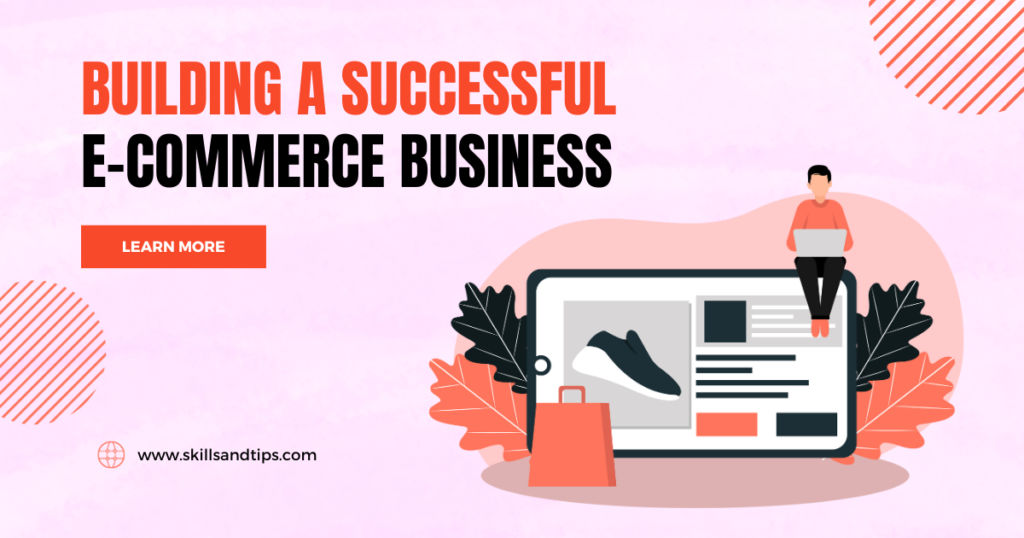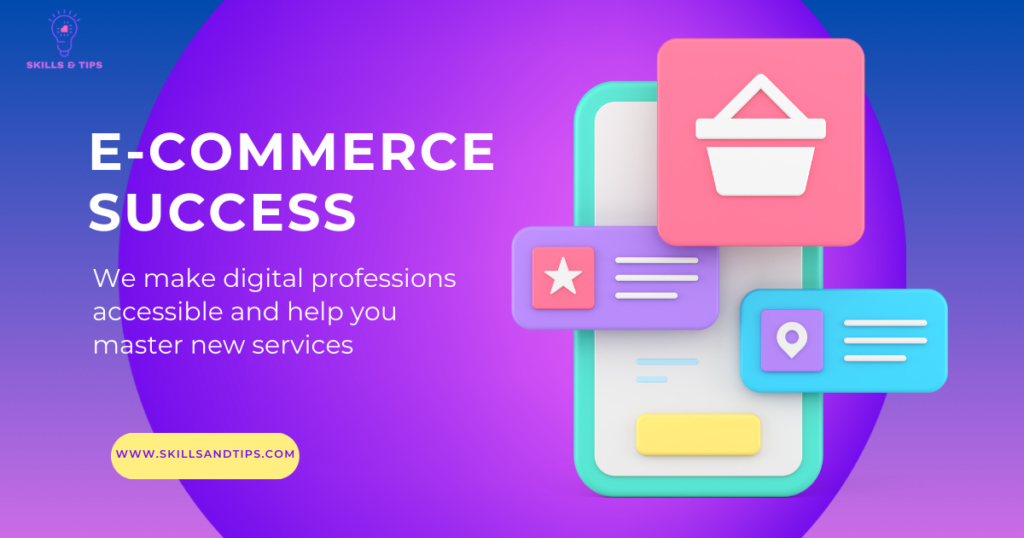In the present digital era, making money online has to turn into an increasingly popular bid. One avenue that multiple beginners are exploring is the world of e-commerce.
E-commerce full form is electronic commerce, it is the process of buying and selling products and services through the Internet. It entails the whole process, from online browsing and product picking to payment and delivery. It has revolutionized the way business is conducted, allowing both individuals and companies to reach a universal market from the relief of their own places.

Table of Contents
How does e-commerce work?
E-commerce is powered by the internet. clients enter an online store to browse through and position orders for products or services via their own bias.
when the order is set up, the client’s web browser will transfer back and forward with the server hosting the e-commerce website. Data pertaining to the order will be carried to a central computer known as the order manager. It’ll moreover be forwarded to databases that manage inventory rankings; a merchandiser system that manages payment information, utilizing operations like PayPal; and a bank computer. Finally, it’ll circle back to the order director. This is to make clear that store inventory and client funds are sufficient for the order to be processed.
After the order is valid, the manager who takes the order will notify the store’s web server. It’ll display a message notification to the client that their order has been successfully processed. The manager who takes the order will also transfer order data to the warehouse or department, to make sure that the product or service can be shipped to the client. At this point, tangible or digital products may be sent to a client, or access to a service may be granted.
Types of E-commerce
1. Business-to-Consumer (B2C): This type of e-commerce involves deals between businesses and individual consumers. It’s the most familiar form of e-commerce and includes online retail platforms like as Amazon, where consumers can buy products directly from sellers.
2. Business- to- Business (B2B): B2B e-commerce involves transactions between businesses. This includes companies picking up raw materials or wholesale products from suppliers online. B2B platforms frequently offer technical features adapted to the requirements of businesses.
3. Consumer- to- Consumer (C2C): C2C e-commerce occurs when individuals sell products or services straightway to other individuals through online platforms. Popular examples include online commerce like eBay and Etsy, where individuals can list and sell products they no longer need or have crafted themselves.
4. Consumer-to-Business (C2B): In C2B e-commerce, different consumers offer their products or favors to businesses. This kind of strategy is common in the gig economy, where freelancers and self-dependent contractors give their skills or experience to companies.
How to Start in E-commerce

1. Research and Choose a Niche: Start by relating a special product or service niche that you are confident about and that has market demand. Conduct thorough market exploration to judge the feasibility and profitability of your selected niche.
2. Make a Business Plan: Outline your business ideas, target audience, marketing master plans, and financial projections in a comprehensive business system. This will serve as a roadmap for your e-commerce trip.
3. Make Your Online Store: Pick a suitable e-commerce platform, like Shopify or Woo Commerce, and design your online store. Pay concentration to user experience, aesthetics, and mobile responsiveness to deliver a perfect shopping experience for your clients.
4. Source or make Products: choose whether you will bear out products from suppliers or make your own. Research trustworthy suppliers or explore options like dropshipping to simplify your product inventory operation.
5. Set Up Payment and Shipping Techniques: Integrate secure payment gateways, like PayPal or Stripe, to make smooth deals. Develop a shipping plan and choose recognized shipping providers to guarantee the timely delivery of orders.
6. Apply Marketing Strategies: Use a mix of digital marketing methods, containing social media marketing, content creation, search engine optimization (SEO), and email marketing, to advance your online store and attract clients.
7. Analyze and Optimize: Continuously monitor and analyze your e-commerce performance using analytics tools. Identify areas for improvement and make data-driven decisions to optimize your sales, conversion rates, and customer satisfaction.
Click here to get Free Course of E-commerce
Pros and Cons of E-commerce

Pros
• Global Reach: E-commerce allows you to enter clients worldwide, breaking geographical limitations and expanding your client base significantly.
• Lower beginning Costs: Compared to setting up a physical store, starting an online business requires minor initial capital. You can save on charges like rent, service, and labor force, making it a more affordable option for newbies.
• Flexibility and Convenience: With e-commerce, you can work on your business from anywhere at any time. Whether you are a stay-at-home parent or a digital rambler, e-commerce offers the independency to handle your business on your own terms.
Cons
• Tough competitor: The ease of entry into the e-commerce market means that you will face tough competition from other online sellers. It’s key to differentiate yourself and deliver unique worth to succeed.
• Technical Challenges: Building and keeping up an online store involves technical aspects like as website development, hosting, and online security. Beginners may require to invest time and effort in getting this expertise or hiring professionals for assistance.
• client Trust: Establishing trust with online clients can be demanding, specifically for new businesses. applying secure payment ways, offering trustable client service, and constructing a strong brand reputation are essential way to gain client confidence.
FAQs
Q1: How much money can I make with e-commerce as a beginner?
The possible earnings in e-commerce as a beginner is$ 1000 to$ 20,000 per month. It high-mindedly depends on factors like your selected niche, marketing techniques, product quality, and competitor. It’s all-important to set realistic ambitions and continuously accommodate and improve your business to maximize profitability.
Q2: Do I need specialized skills to start an online store?
While specialized skills can be helpful, multiple user-friendly e-commerce platforms give drag-and-drop functionality and simplified store setup processes. Basic computer knowledge and alacrity to learn can proceed a long way in getting started in e-commerce.
Q3: How can I stand out from my competitors in the crowded e-commerce market?
To look different from challengers, concentrate on delivering exceptional client service, personalized experiences, unique products, and a convincing brand story. highlight your competitive advantages and interlink with your target audience through engaging content and social media
Conclusion
Embarking on an e-commerce trip as a beginner can be both exciting and demanding. By understanding the fundamentals of e-commerce, choosing the right niche, and applying effective marketing plans, you can make a successful online business. Remember to continuously adjust, learn from your experiences, and prioritize client satisfaction. So, why wait? Start your e-commerce adventure moment and pick up the uncountable chances of making money online.

